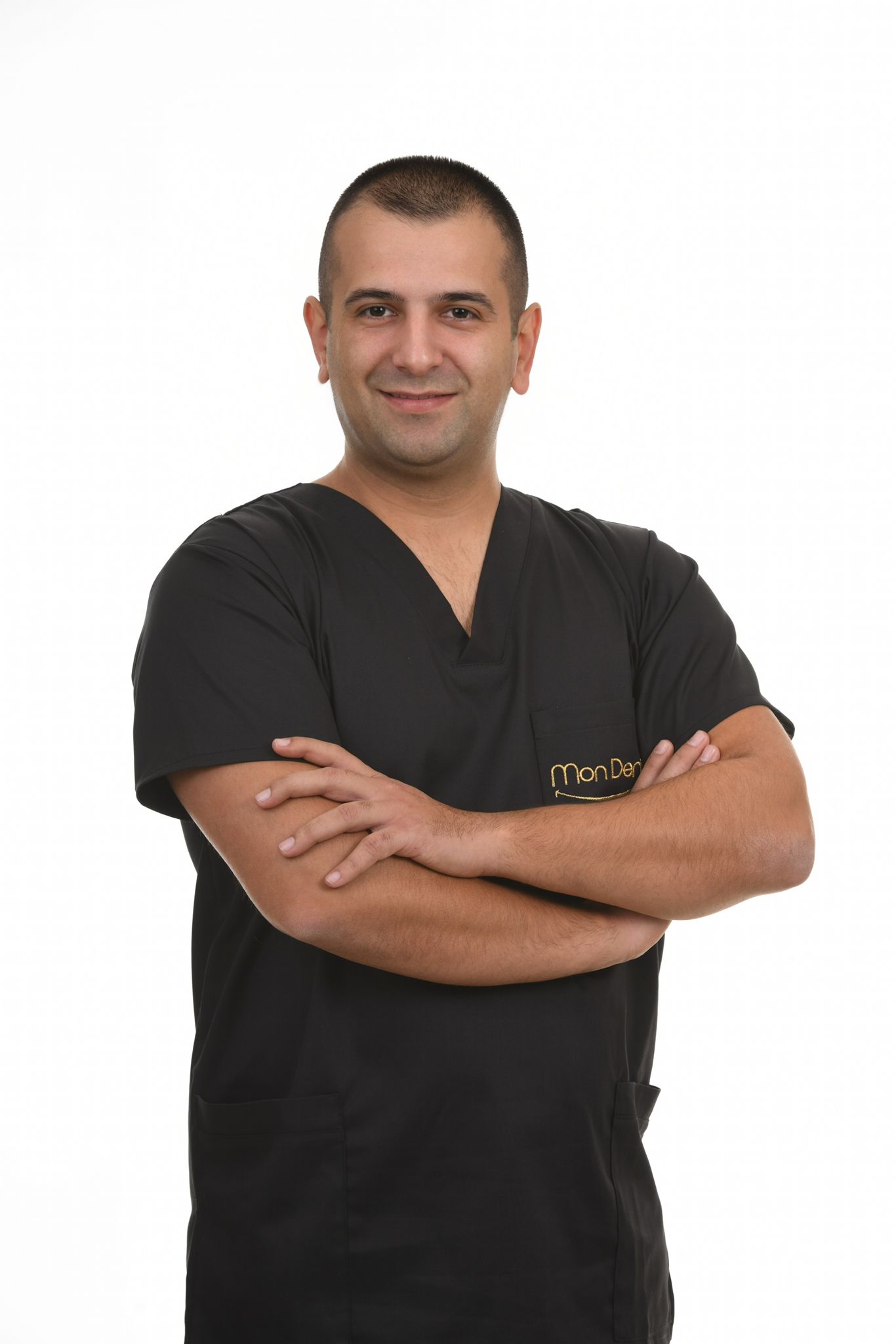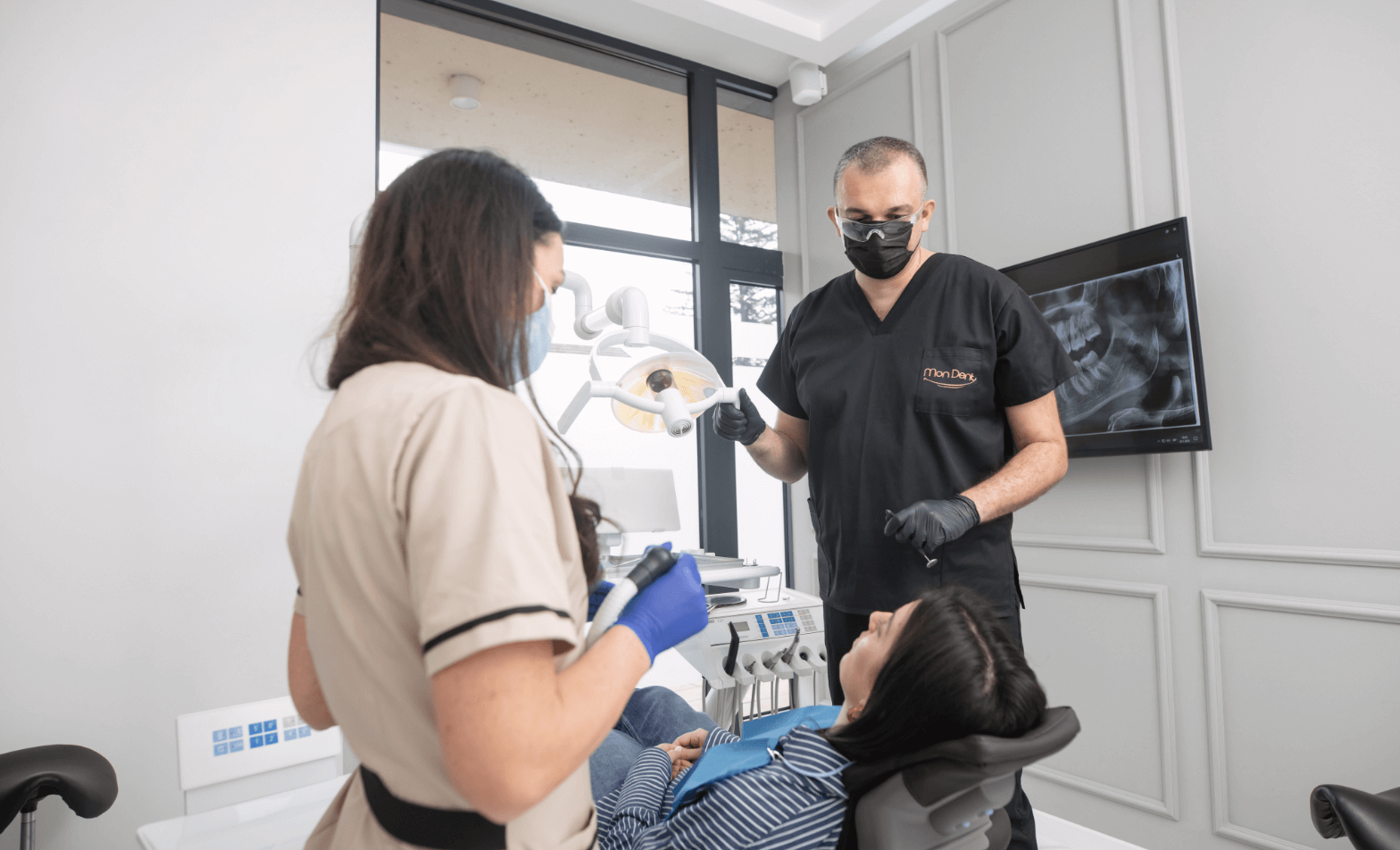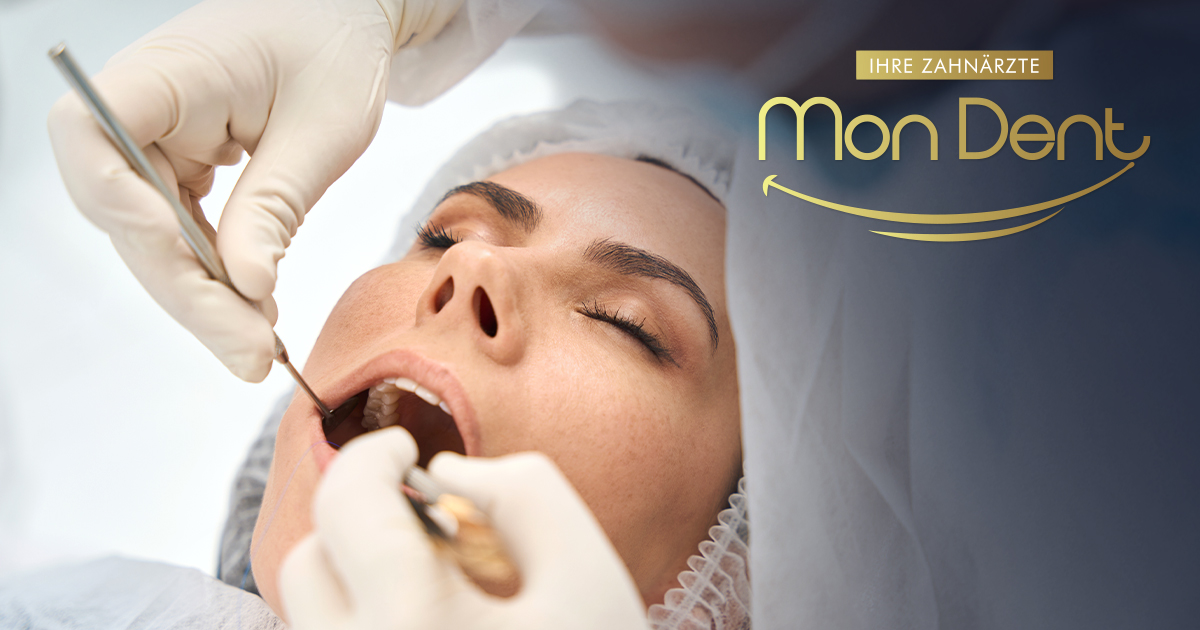Content:
- When is wisdom tooth extraction necessary?
- Classic vs. surgical wisdom tooth extraction
- What does the procedure look like and how to prepare?
- Recovery after surgery
- Conclusion
Wisdom tooth extraction It is one of the more demanding tooth extraction processes, but it is also a procedure that has been perfected to the maximum by dentists. If your dentist decides that it is time for a wisdom tooth extraction, ask your dentist everything you want to know so that you are fully prepared for this procedure.
We bring you all the necessary information that will help you prepare for the wisdom tooth extraction process as best as possible, but you will also find all the information regarding recovery after the surgery. Find out what you can eat, whether you receive anesthesia during wisdom tooth extraction, and what the procedure itself looks like in this blog!
MonDent dental practice has a team of experts who take care of every aspect of your visit to the dental office. We have surgeons who approach every wisdom tooth extraction professionally and expertly, ensuring that your pain is as minimal as possible.
Do you feel pain and your wisdom tooth is bothering you? Contact us and schedule your first available appointment with our dentists.
When is wisdom tooth extraction necessary?
Wisdom teeth are also known as third molars, and when they start to grow, they often don't have enough room to grow in like other teeth. This can lead to a number of problems that can only be solved by removing the wisdom teeth.
It is very important to know that you must contact your dentist if you experience any problems with your teeth and jaw. The dentist will check your condition and advise you on whether you should have your wisdom teeth removed or if there is no need.
Cases where you need to have your wisdom tooth removed:
If wisdom teeth cannot erupt because they are obstructed by bone or another tooth, wisdom tooth extraction is in most cases the only solution. This condition is called impacted wisdom teethAlso, if you feel inflammation very oftenIf you constantly experience swelling, redness, pain, or an unpleasant odor around your wisdom tooth, this is a sign that wisdom tooth extraction is inevitable. If you notice this, visit your dentist and he or she will take the matter into his or her own hands. Wisdom tooth extraction under inflammation is almost never done. First you will treat the inflammation and only then will you arrange an appointment for extraction.
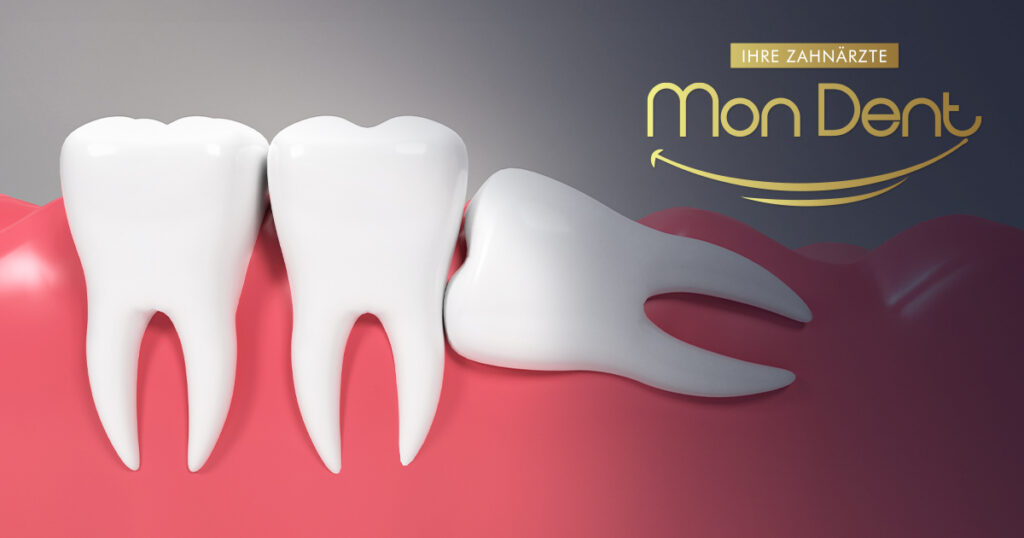
When wisdom teeth grow, they are in a place that is very inaccessible for successful tooth brushing, so occurrence of caries very common and therefore wisdom tooth extraction is inevitable. One of the very common reasons why wisdom teeth are extracted is orthodontic reasonWisdom tooth extraction is recommended to make room for the proper arrangement of other teeth.
The procedure itself – step by step
The procedure for removing a wisdom tooth varies depending on whether it is classical or surgical extractionThis decision is made by your dentist based on dental X-rays that they will request from you prior to the surgery. Here's how the process looks like:
- Local anesthesia – The first step is to completely eliminate pain. Anesthesia works quickly and effectively, and during the procedure, the patient does not feel pain, only mild pressure.
- Tooth extraction – In a simple extraction, the tooth is pulled out without cutting. In a surgical extraction, a small incision is made in the gum to access the tooth, which is divided into sections as needed and gradually removed.
- Wound cleaning and stitches – After removal, the wound is cleaned and disinfected. In surgical procedures, the wound is sutured, and the sutures are removed after 7–10 days, unless they are absorbable (dissolve on their own).
The procedure usually takes 20 to 40 minutes, depending on the complexity of the case. During this time, you will need to remain completely still and listen to your dentist's instructions.
For successful wisdom tooth extraction, contact MonDent dental office and dentists within the oral surgery will solve your problem with wisdom tooth growth and pain.
Does it hurt and how long does it last?
We know that the biggest fear of our patients is whether wisdom tooth extraction will hurt. We completely understand the fear of all our patients and that is why we have a clear and special approach to patients. We will not perform the procedure if you are upset and feel panicked. In these cases, we will schedule a new appointment.
The good news is that modern dentistry makes it possible completely painless procedure thanks to local anesthetics. Local anesthesia lasts for 2 to 4 hours, which allows enough time for the dentist to extract the tooth without feeling any pain.
INFO: With anesthesia, you will not feel any pain, but you will likely feel pressure and vibrations that are not painful. If you do feel any pain, tell your dentist.
Classic wisdom tooth extraction takes an average of 15 to 30 minutes, while surgical tooth extraction takes a little longer, from 30 to 60 minutes.
Types of wisdom tooth extraction: Classical vs. surgical wisdom tooth extraction
Before your visit to the dentist, you cannot know whether you will need to have your wisdom tooth extracted and, if so, whether it will be a classic or surgical extraction. Depending on the current condition and position of the tooth, the wisdom tooth can be removed routinely, in a few minutes, or it may be necessary to apply precise surgical techniques.
What is surgical wisdom tooth extraction and when is it necessary?
Surgical removal of wisdom teeth is a routine procedure used when a tooth has not fully erupted or is trapped beneath the gums and bone. Such teeth often cause pain, swelling, or cyst formation, so their removal is important for oral health.
The procedure is performed under local anesthesia, and access to the tooth is achieved through a small incision in the gums. If necessary, the tooth is divided into parts for easier extraction. Although it sounds complicated, the procedure is safe, controlled and painless thanks to modern techniques.
The difference between simple and complicated extraction
Simple extraction refers to wisdom teeth that are erupted and easily accessible, so they are removed quickly and without cutting. Complicated extraction is necessary when the tooth is tilted, partially erupted, or completely retained in the jaw, which requires surgical access and additional techniques.
Although it sounds more serious, complicated extraction is not dangerous – with precise diagnostics and an experienced dentist, the procedure is safe and painless.
What does the wisdom tooth extraction procedure look like?
For many patients, the very thought of having wisdom teeth removed is nerve-wracking – but when you know what to expect, everything becomes much easier. At MonDent dental practice, the procedure is carefully planned and performed in controlled conditions, with local anesthesia that completely eliminates pain. Before each procedure, the dentist will first thoroughly examine the current condition of your jaw, perform a X-ray which provides minimal radiation exposure, and will present you with the best solution for your current condition. At Mondent, we strive to make every extraction, whether simple or surgical, as pleasant as possible – with detailed explanations, a gentle approach, and maximum safety.
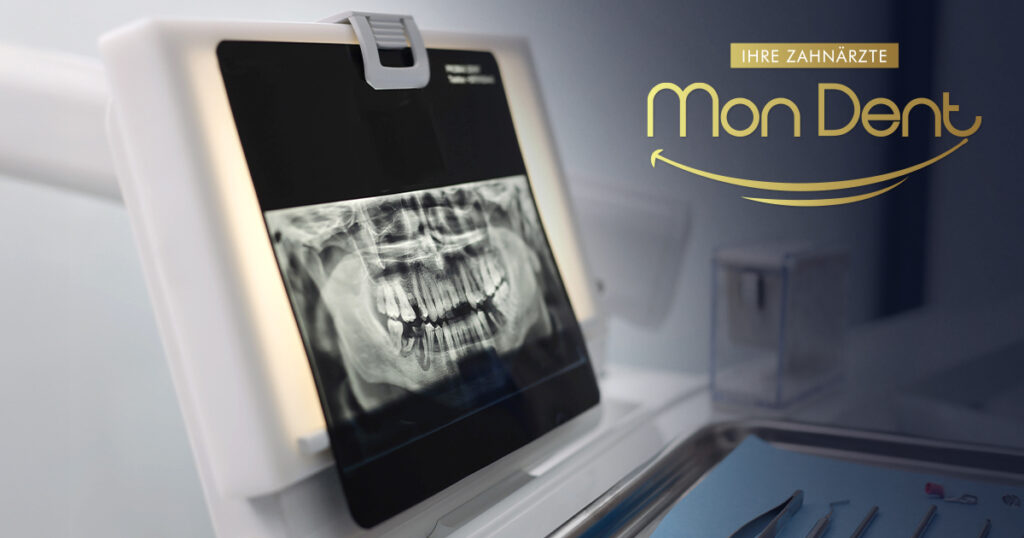
Patient preparation – What to expect before visiting the dentist
During your first consultation, your dentist will explain the procedure to you and, based on the X-ray, assess whether a simple or surgical intervention is needed. This step is crucial because it ensures that the procedure is quick, safe, and without surprises.
Patients usually come after a light meal, and before the extraction, it is important to inform your dentist about all chronic diseases, medications you are taking, and any allergies. The rest is up to us – your only task is to relax and be in safe hands.
The procedure itself – step by step
Once the anesthesia takes effect, the patient does not feel pain, but only a slight pressure. If wisdom tooth grown and easily accessible, the tooth is carefully released from its socket and extracted in one piece.
In more severe cases, especially with impacted wisdom teeth, surgical extraction is performed – a small incision is made in the gums, and the tooth is divided into smaller pieces if necessary for easier extraction. Everything is done very precisely and gently, with constant monitoring of the patient's condition.

Once the tooth is removed, the wound is cleaned and, if necessary, sutures are placed. The entire procedure usually takes between 20 and 45 minutes, depending on the complexity, and the patient is immediately given clear instructions for home care.
Recovery after wisdom tooth extraction
Recovery after wisdom tooth extraction is usually quick and problem-free, especially when the patient follows the advice they receive after the procedure. The first 24 hours is key – then you should avoid physical exertion, smoking, drinking hot beverages and rinsing your mouth, as all of this can disrupt the natural healing process.
Mild pain, swelling, or a feeling of tightness are completely normal and expected. They most often occur within the first few days and are easily relieved with recommended analgesics and cold compresses. The diet should initially be soft and cold – soups, yogurt, pureed foods – until the wound begins to heal. After only three to five days, most patients return to their usual activities.
The most common complications and when to contact a dentist
Although complications are rare, it is important to know how to recognize them and when it is time to see a dentist. The most common occurrence is the so-called "water alveolitis", a condition where a clot in a wound does not form properly or is lost prematurely. This can cause severe pain that persists for several days after removal, and requires professional intervention.
Also, if you notice severe swelling that does not go away, high temperature, unpleasant odor from the wound or difficulty opening the mouth, this could be a sign of infection. In these cases, don't wait – call the office and schedule an appointment.
Conclusion
When you look at the big picture, wisdom tooth extraction is a routine procedure that preserves the health of your teeth and jaw. At Mondent, we strive to ensure that every step, from examination to recovery, is tailored to your needs, with as little discomfort and stress as possible.
If you are experiencing pain, swelling, or suspect that your wisdom tooth is causing you problems, don't delay a visit to the dentist. Our team is here to listen to you, explain everything you are interested in, and offer the best solution – quickly, safely, and painlessly. Contact us and make an appointment!

